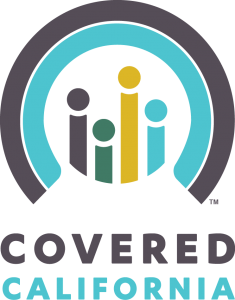Covered California continues to benefit from cheerleading media

 Monday’s “deadline” for signing up for the Affordable Care Act triggered bad headlines for the federal health exchanges, which had an encore of last fall’s computer nightmares.
Monday’s “deadline” for signing up for the Affordable Care Act triggered bad headlines for the federal health exchanges, which had an encore of last fall’s computer nightmares.
But in California, Covered California enjoyed the usual upbeat happy talk in its media coverage. The San Francisco Chronicle is a good example:
“A last-minute surge of Californians trying to sign up for health insurance before Monday’s midnight deadline slowed down the state’s enrollment website and lengthened wait times for people who called the agency’s toll-free number for help.
“More than 155,000 people signed up for coverage under the Affordable Care Act from March 24 through 2 a.m. Monday, pushing total enrollment in the state health exchange past 1.2 million Californians.”
In the Chronicle’s lengthy article, it never even mentioned such basic distinctions as how many people had paid their premiums versus merely “enrolling.” Nor did it try to determine how many of the sign-ups would be subsidized by taxpayers and how many were paying full price. This angle is absolutely crucial to the long-term viability of Covered California.
Why isn’t this stuff covered? My assumption after 24 years as a California journalist is that it’s a mix of bias, peer pressure and incompetence.
ACA mostly insuring the previously insured
For properly skeptical coverage of the Affordable Care Act, nobody’s done better than former Wall Street analyst Avik Roy. Here’s part of what he posted Monday on Forbes.com:
“Today is March 31, 2014: in theory, the last day you can sign up for coverage under the subsidized Obamacare insurance exchanges. If you’ve been a regular reader of this space, you know that the numbers routinely paraded by the Obama administration regarding Obamacare website sign-ups don’t tell us much about the actual number of uninsured individuals who have gained coverage. A new study from the RAND Corporation indicates that only one-third of exchange sign-ups were previously uninsured. …
“The RAND report appears to corroborate the work of other surveys. Earlier this month, McKinsey reported that 27 percent of those signing up for coverage on the individual market were previously uninsured.
“One important finding of the McKinsey survey was that the proportion of those who had formally enrolled in coverage, by paying their first month’s premium, was considerably lower among the previously uninsured, relative to the previously insured. 86 percent of those who were previously insured who had ‘selected a marketplace plan’ on the exchanges had paid, whereas only 53 percent of the previously uninsured had. …
“What’s important to remember is that this is not how Obamacare was supposed to work. The Congressional Budget Office, in its original estimates, predicted that the vast majority of the people eligible for subsidies on the exchanges would be previously uninsured individuals.
“Instead, the vast majority are previously insured people, many of whom are getting a better deal on the exchanges because they either qualify for subsidies, or because they’re older individuals who benefit from the law’s steep rate hikes on the young.”
So while we don’t know what’s going on in California, nationally, the overwhelming number of people who are actually paid enrollees in the federal exchanges are people who had to get new policies because of Obamacare — not people who were previously uninsured.
You know, the folks who are the core central focus of Obamacare.
Maybe eventually the San Francisco Chronicle will get around to reporting on this angle in California.
Related Articles
Nanny staters’ school lunch debacle, chapter 237
Dec. 10, 2012 By Chris Reed This Associated Press story about student uprisings against federal school-lunch rules is one more
Businesses protest Gov. Brown’s fee hike
March 15, 2013 By Dave Roberts “Constantly expanding the coercive power of government by adding each year so many minute
California needs a political 'Gong Show'
John Seiler: Oct. 4, 2010 Remember the old “Gong Show“? People would display some talent, such as singing or playing



